by Briscoe White | Feb 17, 2011 | Herbs, Life on the Farm, Miscellaneous, Wildlife |
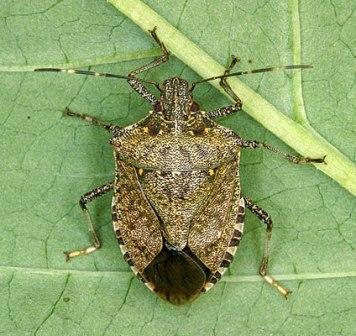
For many of us on the East Coast (particularly MD, DC and VA), this time of year not only marks the first warm weeks which hint of the coming spring season; it means to prepare for the invasion. It’s not a terrorist or nuclear threat we’re talking about…it’s something far smellier: stinkbugs. In 2010 our region suffered a swarm of these foul little pests and as we begin seeing warmer weather in this (hopefully) early spring, they are beginning to settle in like unwanted house guests.
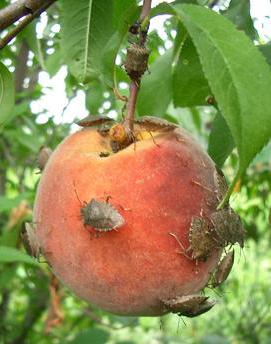
Though they don’t bite or sting, they do emit a pretty putrid odor when crushed, smooshed, vacuumed up, or squished, and though they are more of an annoyance for homeowners, local farmers are beginning to fret. Stinkbugs prey on crops like raspberries, tomatoes, peaches and other fruits, sucking the juices out of them and leaving them undesirable. Especially in the organic farming community, who strive not to use harmful pesticides, concern is on the rise. So, what is your best line of garden defense against these pungent perpetrators? The all natural answer is herbs!
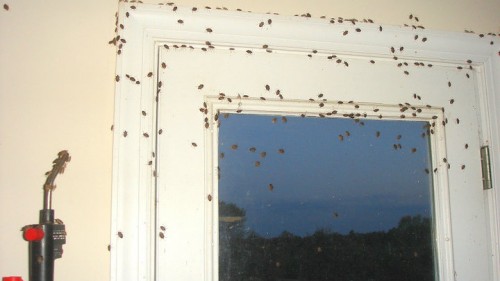
Don't let this happen to your home!
Strongly scented herbs such as Mint, Lavender, Catnip, and Patchouli have been proven to thwart the little stinkers from overwhelming you favorite fruits and veggies. (It’s hard to believe that they are picky about smells…I guess everyone likes their own brand!) You can also try planting other natural insect deterrents around your home or garden like Tansy, ‘Citronella’ Scented Geraniums, Pyrethrums and Rue to keep the bugs at bay. For the insidious insects that have already made it indoors, try making sachets with some of these herbs or use their essential oils to coat your window sills and thresholds. This will hopefully keep the rest of the stinkbugs from sneaking in and joining their friends inside your nice warm home. You can also fill jars with soapy water to catch the critters that have already begun to show up indoors, as the soap will dissolve their exoskeleton, killing them in a non-toxic way.
In conjunction with February being National Bird Feeding Month, try attracting birds to your garden with feeders, houses and baths, to keep your bug problem to a minimum. We’ve heard that blue jays are fond of these stinky little snacks, so encourage them and other seed-eating friends to nest around your yard to prevent the problem from getting out of hand. Bats also find stink bugs to be a delicacy, so place bat boxes throughout your yard and near the garden to help battle the bugs.
by Herb Exchange | Feb 15, 2011 | Inspiration, Miscellaneous, Recipes |

Chimichurri Steak
Our resident Chef and Office Manager, Julie discovered a great recipe over the weekend using fresh herbs. The fresher, the better!
There are so many herbs in our greenhouse to choose from that I can go on a culinary adventure any day of the week. On Friday, I chose to put a little Latin flair into my weekend by whipping up a delicious Argentinean chimichurri sauce with fresh ‘Italian Flat Leaf’ Parsley, ‘English’ Thyme, and ‘Greek’ Oregano that I got right here at The Growers Exchange. This recipe was super simple but packed a world of flavor when drizzled over my perfectly grilled steak!!
Chimichurri (you can use a food processor or chop by hand):
1 1/2 cup Spanish olive oil
Juice of 2 limes
1 1/2 cup finely chopped fresh ‘Italian Flat Leaf’ Parsley
8 cloves garlic, finely chopped
1 shallot, minced
1 Tbsp each finely chopped fresh ‘English’ Thyme and ‘Greek’ Oregano
Salt and pepper to taste
Instructions:
Combine the ingredients in a bowl and season with salt and pepper. Or, place the herbs, shallots and salt & pepper into a food processor. Pulse until fine, then drizzle the olive oil down the shoot while pulsing and until you get your desired texture. Divide the chimichurri between 2 bowls. Use half as the marinade and half as the dipping sauce.
Steak:
2 lb skirt steak
Chimichurri
Salt and pepper
Instructions:
1. Place the steak in a large baking dish and pour half of the chimichurri over it. Turn to coat; cover and marinate in the refrigerator for 2 hours.
2. Preheat grill to high. Let the steak come to room temperature. Remove it from the marinade and season with salt and pepper. Grill for 4 to 5 minutes on one side until browned, turn, and grill another 4 to 5 minutes for medium-rare doneness. Remove from the grill, let the meat rest for 10 minutes, and slice thinly on the bias. Serve with the remaining chimichurri on the side
by Briscoe White | Feb 14, 2011 | Flowers, Gardening, Growing, Inspiration, Life on the Farm, Miscellaneous |
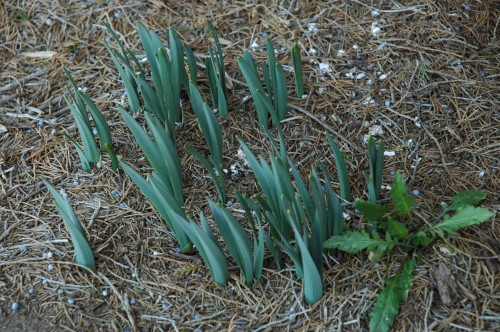
Daffodils are a sure sign of spring!
Every year that we have been blogging, I get to a time in early February when I begin searching for signs of spring. Most of this searching goes on close to the ground because the blustery winter wind does not feel like spring. But even with the frigid temperatures, I know some plants have begun to get ready for a break in the weather.
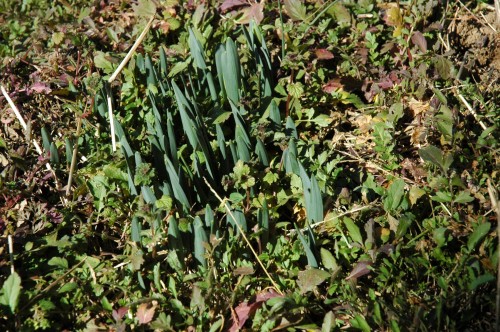
Spring has sprung on the farm!
The most reliable harbingers are the bulbs. Crocus and snowdrops are usually the first spring growth sighted, followed by the early varieties of daffodils. But this year was a little different, and it was a clump of honeysuckle that showed me the first plant growth of spring. After a more thorough investigation, I went looking around the farm and sure enough; bulbs had emerged from the ground! I am not refuting anything the groundhog said, because we do have weeks of cold weather ahead (in spite of the sixty degree weather we’re having this week in central Virginia). But the difference now is that we know spring has begun and it is only a matter of time before the ground thaws and that first warm breeze sweeps through your garden!
by Herb Exchange | Feb 11, 2011 | Gardening, Growing, Herbs, Indoor Gardening, Inspiration, Miscellaneous, Urban Gardening |
Since we recently posted on our Social Media and Marketing Director, Caroline’s Nasturtiums that went to seed, there has been an exciting development! Read her update below for the news…
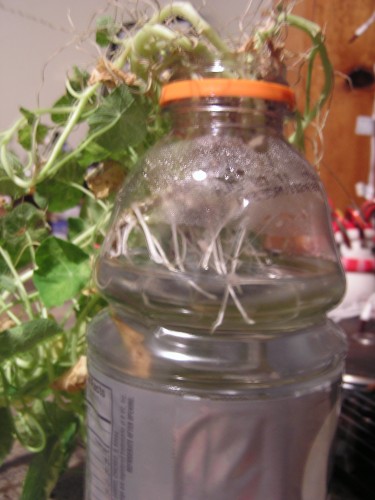
My severed Nasturtium actually started sprouting little, white roots!
Well, when repotting my ‘Alaska Mix’ and ‘Empress of India’ Nasturtiums recently, I accidentally broke off a beautiful, healthy stem that had a ton of marbled foliage trailing from it. Worried that I had just ruined one of the prettiest branches of the plant, I immediately started to look around for a solution. With the speed of an ER nurse, I placed the severed “appendage” in the first thing I could find and fill with water–an empty Gatorade bottle. After filling the bottle with cold water and jamming the wounded end of my favorite plant down into the neck of the bottle so that it was just under the water level, I left my crippled Nasturtium to recuperate in a sunny spot. I had honestly forgotten that it was even there, and figured that maybe it was only staying green because it was freshly cut, and, much like a bouquet of cut flowers, it would wilt and become compost in a week or so. Much to my surprise when I happened to take a look at it last night, the lonely, broken stem had started to put out lots of little, white volunteer roots, each stretching down into the water. Amazed that my accidental pruning had resulted in another Nasturtium plant, I just had to share! The moral of my story is that even trial and error in gardening can grow to be a great experience!
by Briscoe White | Feb 11, 2011 | Containers, Gardening, Growing, Herbs, Indoor Gardening, Life on the Farm, Miscellaneous, Urban Gardening |
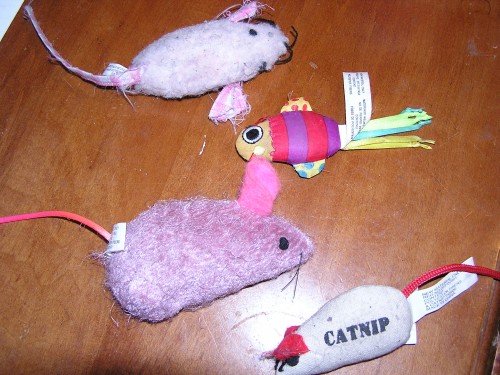
Tons of cat toys are packed with Catnip to perk your cat's interest!
Looking for a great all natural way to treat your favorite feline? Try Catnip! Often found packed into the plush insides of a cute little toy or sold in dried form at local pet stores, catnip makes most cats pretty crazy. Over eighty percent of cats are affected by the chemical component Nepetalactone, which is found in the essential oils of this perennial herb. A combination of genetics and age determine whether your felines will fiend for Catnip, as studies show that kittens don’t seem to respond until around the age of three months. Though not explored extensively, there are many cases of dogs and even some bears who find the scent of “nip” irresistible. Reactions range from sleeping and drooling, to frantically pouncing and running around, and cats seem to also experience heightened tactile sensations which may include being rubbed on their face, petted or brushed to excess.
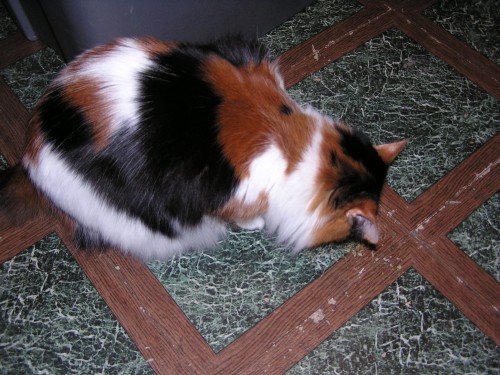
Our Media Director's cat, Sophie, eating dried Catnip. She likes the fresh stuff better!
Also known as an excellent natural insect repellent, the essential oils are often found in many DEET-free bug sprays. If making your own concoction to deter pests, try using Lemon Catnip for a fragrant citrus aroma. Catnip also has a history as a medicinal herb for its sedative properties and makes a soothing tea to help you relax, much like Valerian, an herb known to mellow you out and known commonly as “the poor man’s Valium”. Slightly numbing, Catnip is also reputed to strengthen immunities to fend off colds, fevers and the flu, and also calms an upset stomach. Growing fresh Catnip for your kitties isn’t just fun and games. The vitamins and nutrients they get from eating the raw plant is great for their bodies, and the plant itself can help cause any indigestion which may result from some store-bought foods.
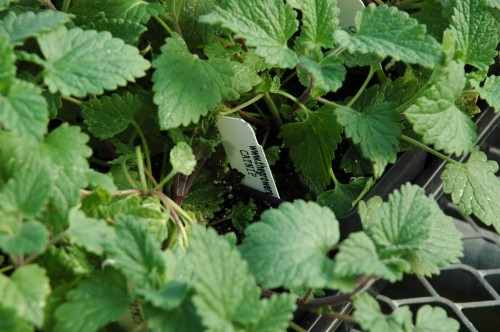
Our Catnip is all natural and because we don't use harsh chemicals, it's purrrrrfectly healthy for your cat!
If you plan to grow Catnip for your cats indoors, you may want to plant two pots, one to keep out of their reach outdoors, and one for them to enjoy inside, but make sure to swap them occasionally so they don’t completely attack the indoor pot! If you’re growing it outdoors, be aware that neighborhood cats may be flocking to your garden. To prevent their frantic frolicking from interfering with other, more tender plants that may be growing nearby, either plant your catnip in a well-drained, separate area of its own, or build a fence around your garden. (If you have problems with container-planted Catnip, try placing it in a large, metal bird cage or dog kennel, where the kitties can’t plow through it all and destroy your plant.) If you want to really encourage your cats to love you more, try planting Catmint, Lemon Catnip and Valerian in your garden. All three of these great herbs are kitty-friendly, human-friendly and make a really calming tea. Treat your cats the natural way and grow them a garden full of treats!
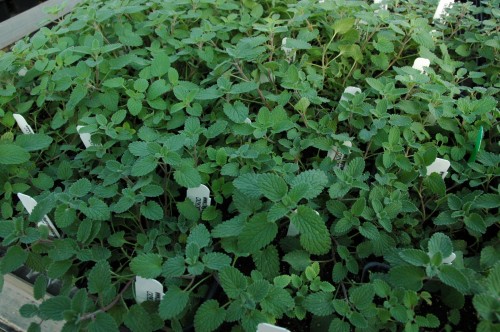
Catmint is another great herb to get your felines frisky!
by Briscoe White | Feb 10, 2011 | Inspiration, Miscellaneous |
Recently I was reading our two county bi-monthly newspapers. I try to read often to keep up with local news. Most issues carry reports of various crimes and court actions happening in the surrounding area, which is entertaining lunch reading. Until recently I had not even been aware of letters to the editor, but a half page one caught my eye and I read a dialog of what someone else thought wrong and right should look like. I never talk politics and never feel a need to express my version of Utopia to others. It is not that I am without opinion; rather I keep things in perspective because most contemplation goes on while doing gardening chores. Proper immersion into gardening mellows current events by contrasting with the slow and steady progress of the seasonal progression.
My first reaction after reading the zealous letter, was humor at the conclusion. This heart felt recipe for making everything right (with advice for fixing the wrong) ended with this call to arms: “What Say You?”. It was this call to arms that really stuck with me. To further strengthen this call, my mind wandered to someone I know who has been watching The Lord of the Rings! I guess the warrior spirit has come to life?
The real reason for the title is our desire here at The Growers- Exchange.com to hear from our many customers. In our continuing effort to improve our shipping, we would love to hear how all of those herb plants are growing out there all over the country. We base a good chunk of our business decisions directly from customer response and communication. We honestly do hear you and care about what plants or products you want, what measures we can take to be more efficient for you, and everything else, right down to your best garden advice.
Sitting around brainstorming how best to prepare our customer service reps, we thought it would be helpful to hear what are our customers’ most frequent questions are. So, even though we do have a sense of humor most of the time, right now, The Growers Exchange asks all of you, our customers: What Say You?











